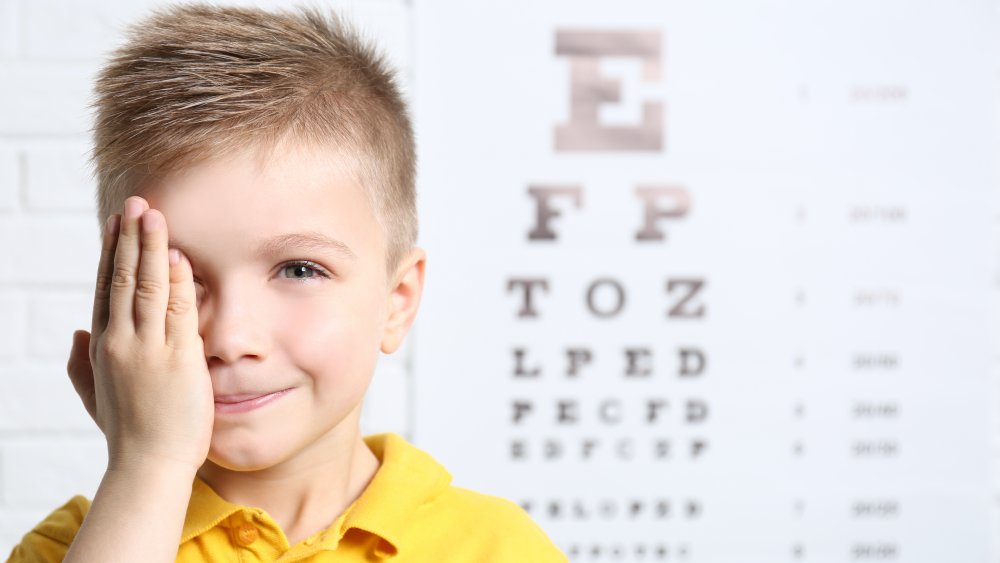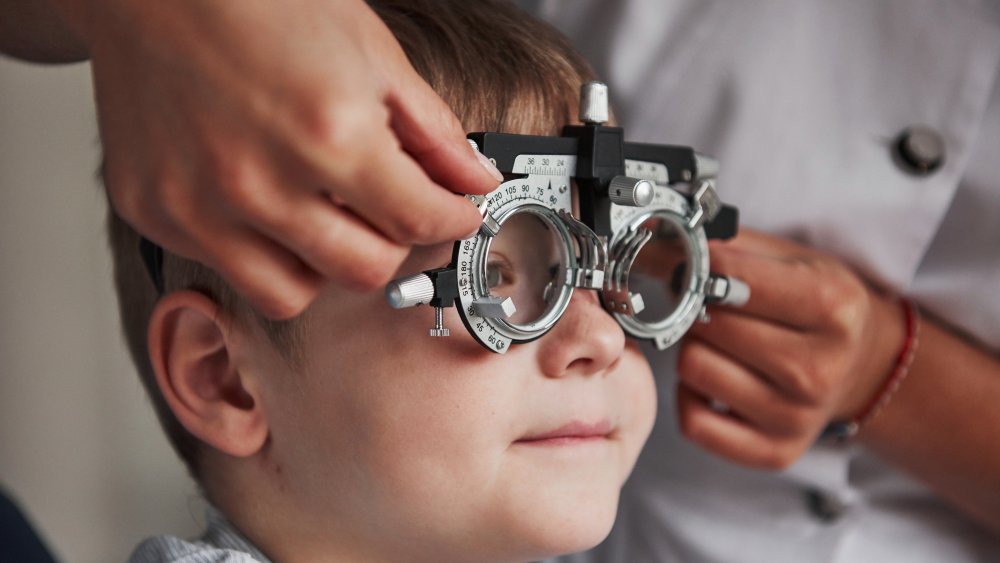The Reason COVID-19 Is Causing Kids To Miss These Important Health Screens
Pandemic-prompted home schooling undoubtedly has its upside, with kids getting more family time and more sleep and parents having significantly lower "back to school" shopping expenditures since no new wardrobes are required (at least, in most cases). Families whose schooling remains virtual also don't have to scour the stores for those Clorox wipes every classroom teacher seems to have on their supply list.
Still, there are some drawbacks to keeping kids out of school. Not only are their social lives suffering, but in some cases, their health is impacted, as well. Both children and teachers are at less risk of exposure to the COVID-19 virus as well as to flu, colds, and all the other diseases that seem to be as much a part of learning as getting bonked on the head with a volleyball and being served overcooked broccoli for lunch each day, and that's a good thing.
What's not so great is, some kids, particularly low-income ones, are missing out on some much-needed medical care. Not only are vaccination and lead testing rates down, but Healthline reports that many kids are missing out on eye exams.
How COVID-19 is complicating kids' eye issues
As NYC pediatrician Dr. Hela Barhoush told Healthline, "Screening tests such as vision testing... are typically performed on an annual basis by school nurses." While these screening tests don't take the place of comprehensive eye exams, they often identify problems such as near-sightedness that parents can then follow up on with an ophthalmologist. Brad Brocwell, OD, vice president of clinical operations for Now Optics, points out, "Remote learning and no access to school vision screenings could make it more likely that a vision issue might be missed."
What's more, many low-income kids often don't really have any type of regular medical care outside of a school setting, and those school screenings might have been able to connect them with necessary services. Dr. Joel Leffler, pediatric ophthalmologist at Children's Eye Care of North Texas, notes, "It is safe to assume that these at-risk children have even less access to essential services like vision screenings and assessments during the pandemic, as availability of health and community services are even more limited."
Increased screen time may cause eye strain
Not only are kids missing out on eye exams, but online schooling may be actually exacerbating any potential eye problems they may have. Dr. Scott Edmonds, Chief Eye Care Officer with UnitedHealthcare, explains that digital eye strain is a thing, and increased time spent in front of a computer screen could lead to kids' suffering retinal damage from the blue light those screens emit (via Public News Service). He also says that looking at a screen from less than 30 inches away (as is the case with almost any computer user not possessed of super long arms) could cause nearsightedness.
So what can we do to protect our kids (and ourselves) from computer-induced eye issues? Edmonds suggests you follow the '20-20-20 Rule:' "Every 20 minutes, you need to look at an object 20 feet away or further, for 20 seconds." He says this practice not only reduces blue light exposure, but also "gives the muscles in the eye a rest from sustained contraction." He also suggests blue-light blocking devices such as screens or glasses (Lifewire says there's an app for that). Dr. Benjamin Ticho, associate professor of ophthalmology at the University of Illinois at Chicago Medical School, says you can even DIY eye exams if necessary, telling Healthline: "Remote visual acuity testing (20/20 equivalent) is relatively simple on a computer or even a smartphone [because] there are many apps for a regular vision check."



